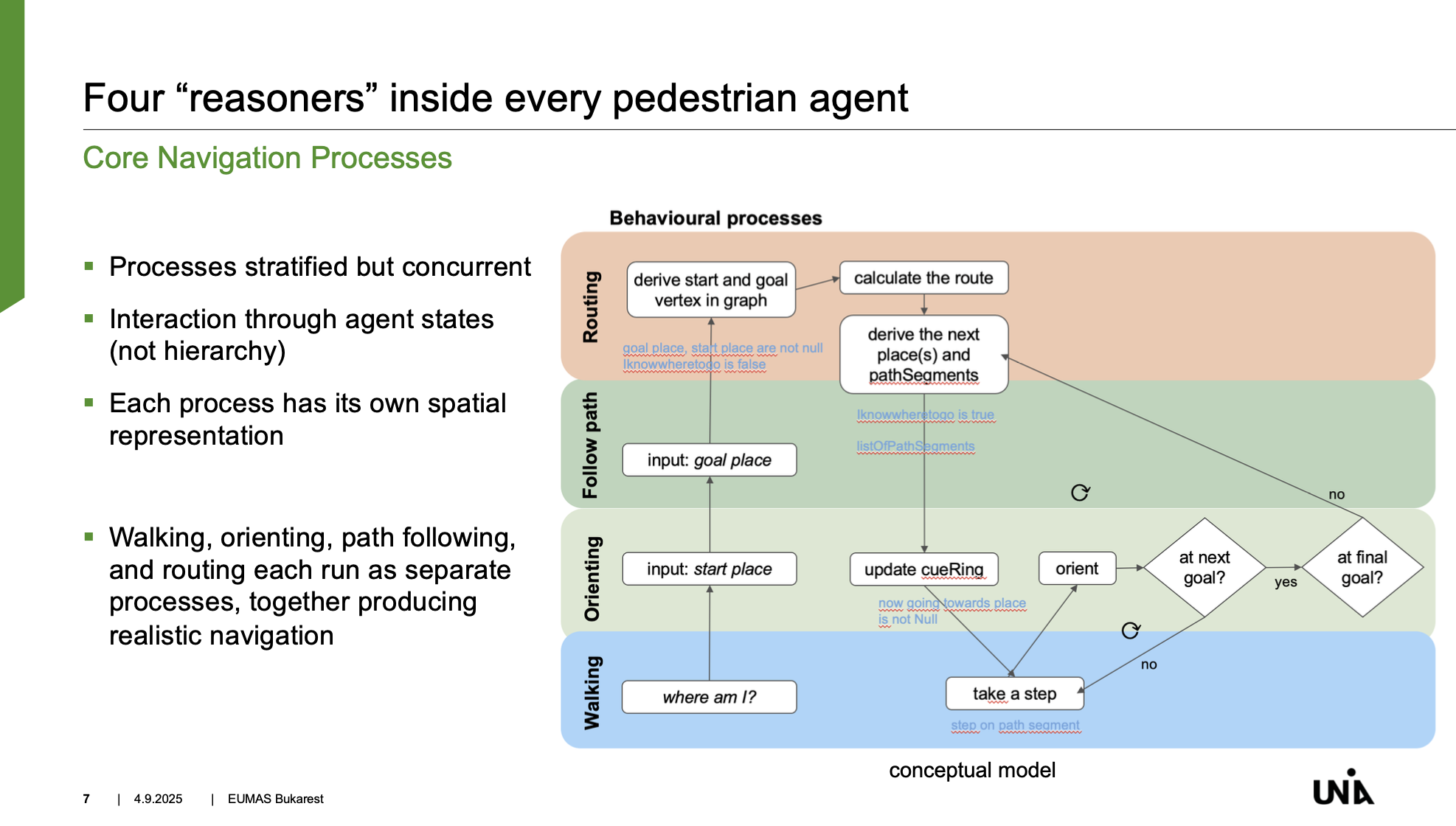Realistic Agent Behaviour based on Concurrent Process Architectures

An agent architecture provides a structured framework for handling the complexity of agent behaviour. It plays a central role not only in agent-oriented software development but also in agent-based simulation. Classical agent architectures elaborate the sense-reason-act cycle – yet in many scenarios, this is not sufficient for formulating realistic behaviour. An example is an agent model for simulating decision-making in the well-studied problem of human navigation. Here, human decision making is organized in interwoven sub-processes such as perception, movement, planning, and spatio-temporal reasoning. These processes occur concurrently, making human navigation inherently multi-level in nature.
In this paper, we demonstrate how an agent architecture that allows modelling decision-making as concurrent processes can yield realistic and more easily modelled complex agent behaviour. Bringing together research on agent architectures, cognitive architectures, human behaviour modelling, and computational psychology, we present an example that integrates key subprocesses essential for simulating agents guided by cognitively plausible models of human navigation.
